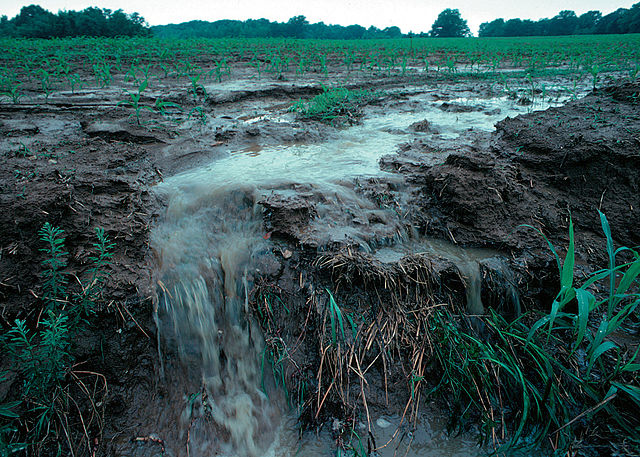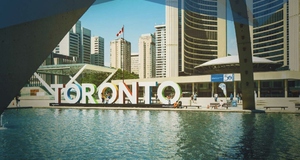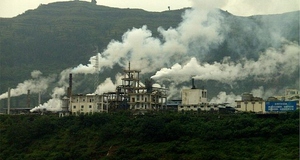Featured Article:Water Pollution Control Policy: Addressing Non-Point Source Pollution
By
2014, Vol. 6 No. 03 | pg. 1/3 | »
IN THIS ARTICLE
KEYWORDS
Non-point source (NPS) pollution occurs when pollutants from many different and often difficult to track sources have a negative impact on air or water quality. Even though this type of pollution accounts for a substantial amount of water pollution in Canada, the problem has not been addressed as vigorously as point-source emissions (pollution from a single identifiable source). Traditional approaches such as emission standards are problematic because NPS emissions are difficult to control due to non-concentrated diffusion. They are also difficult to monitor because of weather-related issues. At present, Canadian provinces are responding to the increased awareness of the environmental damages from NPS and public pressure to ensure the safety of drinking water (Field, Olewiler, p.271). This pressure is in response to recent cases of water contamination such as the E. Coli contamination in Walkerton, Ontario in 2000 where half of the town’s residents had acute illness and seven died. However, problems still persist among many other parts of Canada regarding water-quality standards. Unfortunately, command-and-control (CAC) policies such as technology-based effluent standards (TBS) provide more questions than answers. This is because TBS are not cost effective when MACs differ and so the equimarginal principle is violated and abatement costs are not equalized across emitters In this paper, I provide literature-based empirical evidence of the international experience with tradable water pollution permits (case studies from the US and Australia) and propose the implementation of tradable permits as a policy instrument in the context of NPS pollutants. The practical examples are presented according to different individual substances or parameters that have been the subject of trading systems (salinity and nutrient pollution) in the US and Australia. The existing institutional and regulatory settings of these countries, which are quite similar to Canada in governmental structure, are considered and lessons are drawn from these selected examples.  An example of non-point source pollution (NPS): soil and fertilizer runoff after a rain storm will eventually enter the water supply.
An example of non-point source pollution (NPS): soil and fertilizer runoff after a rain storm will eventually enter the water supply.
1. Theoretical Background and RationaleNPS emissions account for a substantial amount of water pollution in Canada and a uniform national program cannot address such diverse non-point sources as agricultural runoff, urban street runoff, and activities related to land clearance and building construction, as they significantly differ in marginal abatement costs (MACs) and marginal damages (MDs) across each rural/urban area (Field, Olewiler, p.271). While in many cases the regulatory command-and-control approach has led to the reduction in water pollution, only recently has there been a growing move from command-and-control to various economic incentive (EI) instruments (Kraemer et al. 2004). This is partly due to the fact that the cheapest and easiest-to-achieve point source reductions have occurred via regulatory command-and-control instruments, leading to an escalation of costs to meet tougher water quality standards. Moreover, NPS source pollution is not easily controlled by regulation (Kraemer et al. 2004). The instrument of tradable permits is one of several EI instruments used in water management and pollution control. For point sources of pollution, a simple market works as follows. Each source is provided with a permit defining the level of emissions it may discharge, where aggregate allowable emissions for the watershed are determined by the policy maker based on some policy goal. A market is then created by letting firms redistribute emissions levels among themselves by buying or selling “allowances,” which are essentially authorizations to increase emissions (Ribaudo et al. 1999). For example, if firm A purchases an allowance from firm B, then firm A can increase its emissions by the amount specified by the allowance and firm B must decrease its emissions by the same level (Ribaudo et al. 1999). Firms with initial emission levels greater than their initial permit holdings will have to either purchase more allowances or reduce emissions, depending on the relative cost of each method. Firms with higher marginal costs (MCs) of emissions reduction will purchase allowances from firms with a lower MC of emissions reduction. This sort of trading scheme makes it beneficial for firms with lower pollution control costs to reduce emissions by more than firms with higher control costs, reducing pollution control costs for the watershed as a whole. Point-source allowance markets have been used for a number of years with varying degrees of success. (Ribaudo et al. 1999) Most successful has been the market for SO2 emissions allowances, which has significantly reduced firms’ compliance costs for meeting air quality regulations (USGAO, 1997). Based on this success of trading for air pollution control, developed countries such as the US began experimenting with water quality trading, including point source to point source trading, point source to NPS trading, and NPS to NPS trading (ADB 2011). In the case of NPS pollutants, a market could be designed in which point sources would have the option of purchasing allowances from non-point sources to meet their emissions reductions requirements. Trading between point sources and non-point sources is possible when the pollutants are common to both sources (e.g., nitrogen and phosphorus), or when the effects of pollutants on expected damages can be used to determine appropriate trading ratios between different types of pollutants (Ribaudo et al. 1999). Costs of reducing agricultural NPS loads in a watershed may be less than reducing point-source loads, especially where point-source discharges are already being constrained by the National Pollution Discharge Elimination System (NPDES) permits of the Clean Water Act (Ribaudo et al. 1999). Point/non-point trading is most feasible when both point and non-point sources contribute significantly to total pollutant loads (Bartfeld, 1993). If the NPS contributions are very large in relation to the point-source contributions, then the point sources will be unable to purchase enough NPS allowances to make much difference in water quality (Ribaudo et al. 1999). On the other hand, if point sources are very large in relation to the NPSs, savings from trading may not justify the administrative expense of a trading program (Ribaudo et al. 1999). In general, experience with tradable discharge permits for water pollution control has been limited and primarily comes from countries with advanced economies such as the US and Australia. However, trading can be part of the answer to achieve better water quality (Faerth, 2000) as reflected in the positive results reported to date. The European Union (EU), which in some ways resembles a federation, provides another example. On occasion, the EU makes use of “bubbles”1; for instance, in the implementation of the Montreal Protocol on substances that deplete the ozone layer (Kraemer et al. 2004). Since Canada is a federal state and a developed country, it could emulate these countries that have a similar system of government and economic condition. Water pollution permits can contain long lists of substances and parameters that have to be observed (Kraemer et al. 2004). Consequently, the trading systems for water pollution are in relation to individual substances and parameters (salt and nutrients). I present examples according to these different individual substances. The practical examples are based in the US and Australia – two main regions that have extensively applied this type of economic instrument for water pollution control. Information on these cases is based on two earlier reviews of the water-based tradable permits by Kraemer and Banholzer (1999) and Kraemer et al. (2002).Continued on Next Page » Suggested Reading from Inquiries Journal
Inquiries Journal provides undergraduate and graduate students around the world a platform for the wide dissemination of academic work over a range of core disciplines. Representing the work of students from hundreds of institutions around the globe, Inquiries Journal's large database of academic articles is completely free. Learn more | Blog | Submit Latest in Economics |














